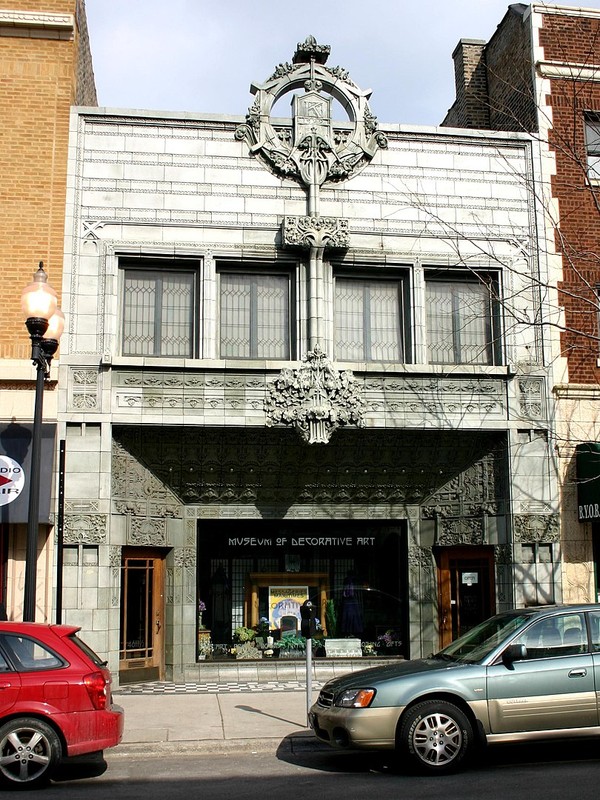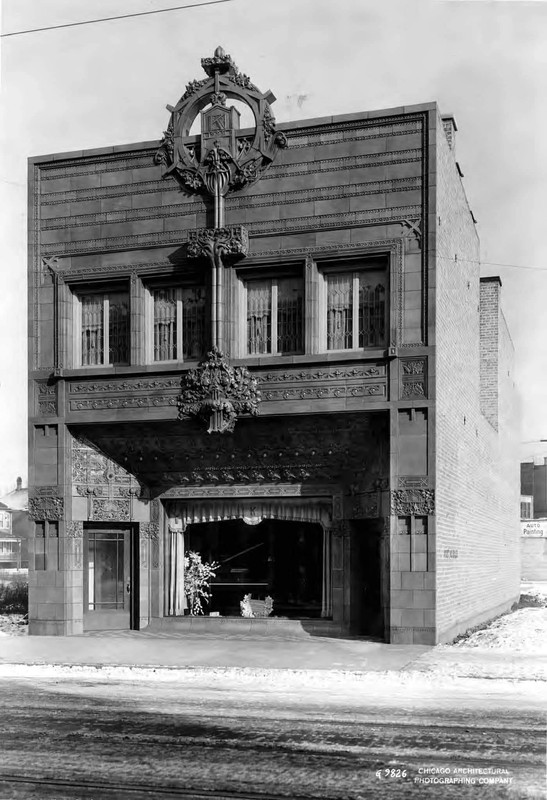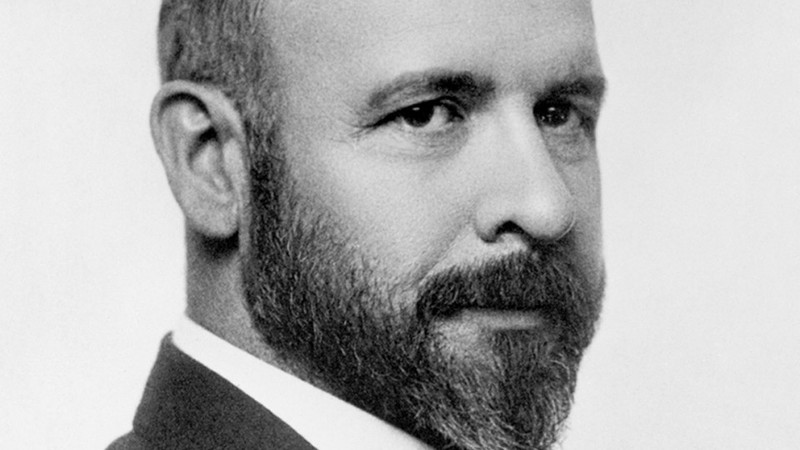Krause Music Store
Introduction
Text-to-speech Audio
The Krause Music Store, a piano and sheet music store owned by German Immigrant William P. Krause, survives as the last architectural commission completed by praised architect Louis Sullivan. Though highly accomplished, Sullivan completed the music store in 1922 after years of struggling; he didn't have an office, and his friends helped him pay for rent and food. Meanwhile, Krause enjoyed success at the store until the Great Depression when he and the store fell on hard times; he committed suicide. Krause's widow sold the building to a funeral parlor, which used the building for sixty years.
Images
2007 photo of the former Krause Music Store building

1922 photo of the former Krause Music Store building

Louis Sullivan

Backstory and Context
Text-to-speech Audio
William P. Krause commissioned the Krause Music Store in 1921. The plan consisted of having a music store on the ground floor and a second-floor apartment for his family. Krause had the fortune of not only having an architect as a neighbor but also one who happened to have worked with an integral figure in developing the "Chicago School: Louis Sullivan. Presto and Sullivan's relationship began in 1919 when Sullivan borrowed Presto from another firm to use as a draftsman during a bank-building project; Presto decided to work with Sullivan permanently. However, financial issues plagued Sullivan later in his career, so he had to let Presto go. Nonetheless, Presto spoke highly of Sullivan and remained friendly with his mentor. So, while Presto designed the Krause Music Store building, he wanted the exterior to be unique and special, so he hired Sullivan to design the building's front facade. Presto and Sullivan collaborated on the project, and their plans were well-received by Krause.
Construction on the building finished in 1922. Krause sold pianos, phonographs, records, and even sewing machines. The store prospered during the 1920s, a period of U.S. history known as the "Roaring '20s" because of the exceptionally robust economy. But, the stock market crash of 1929 and the subsequent Great Depression forced Krause to close his store. He responded by committing suicide (possibly in the second-floor residence, although sources are unclear about the validity of that narrative).
Olga Krause, William's widow, converted the building into a funeral parlor, which remained its function for roughly sixty years. Along the way, several alterations were made to the building. In 1990, Scott Elliott purchased the building and opened Klemscott Galleries, a gallery dedicated to the Chicago School of Architecture, as well as American and European twentieth-century crafts. Elliot, a devotee of Suillvan's work, restored the front of the building to its original Sullivan design.
Today, the Krause Music Store stands as the last of Sullivan's 126 buildings that he designed. Although Sullivan enjoyed terrific success during the late nineteenth century and is today considered one of the most influential and accomplished American (Chicago School) architects, his work on the Krause Music Store coincided with a substantial downturn in Sullivan's success. Sullivan no longer owned his own office, and his friends provided him with significant financial assistance. Two years after Krause opened, Sullivan died penniless in his room at the former Warren Hotel.
Sources
Freundt, Rachel. "Louis Sullivan's Krause Music Store." Architecture and History of Chicagoland. April 14, 2022. https://chicagolandarchitecture.substack.com/p/louis-sullivans-krause-music-store.
"Louis Sullivan." Chicago Architecture Center. architecture.org. Accessed August 25, 2023. https://www.architecture.org/learn/resources/architecture-dictionary/entry/louis-sullivan/.
Lowe, David Garrad. "Architecture: The First Chicago School." The Electronic Encyclopedia of Chicago. 2005. http://www.encyclopedia.chicagohistory.org/pages/62.html.
--- --- ---. "Louis Henri Sullivan and the Chicago School." The Electronic Encyclopedia of Chicago. 2005. http://www.encyclopedia.chicagohistory.org/pages/2414.html.
Rodkin, Dennis. "What’s That Building? The Krause Music Store." WBEZ-Chicago. March 30, 2020. https://www.wbez.org/stories/whats-that-building-the-krause-music-store/2ccdb82d-894f-4e87-a772-084637e2e6eb.
Vukosavich, Peter and Pooja Vukosavich. "Registration Form: Krause Music Store." National Register of Historic Places. 2006. https://catalog.archives.gov/id/28892133.
By J. Crocker, Attribution, https://commons.wikimedia.org/w/index.php?curid=1873482
Chicago Architectural Photographing Company, 1922. (American Terra Cotta & Ceramic Co, UMN Libraries, Northwest Architectural Archives) via Architecture and History of Chicagoland: https://chicagolandarchitecture.substack.com/p/louis-sullivans-krause-music-store
https://www.architecture.org/learn/resources/architecture-dictionary/entry/louis-sullivan/
